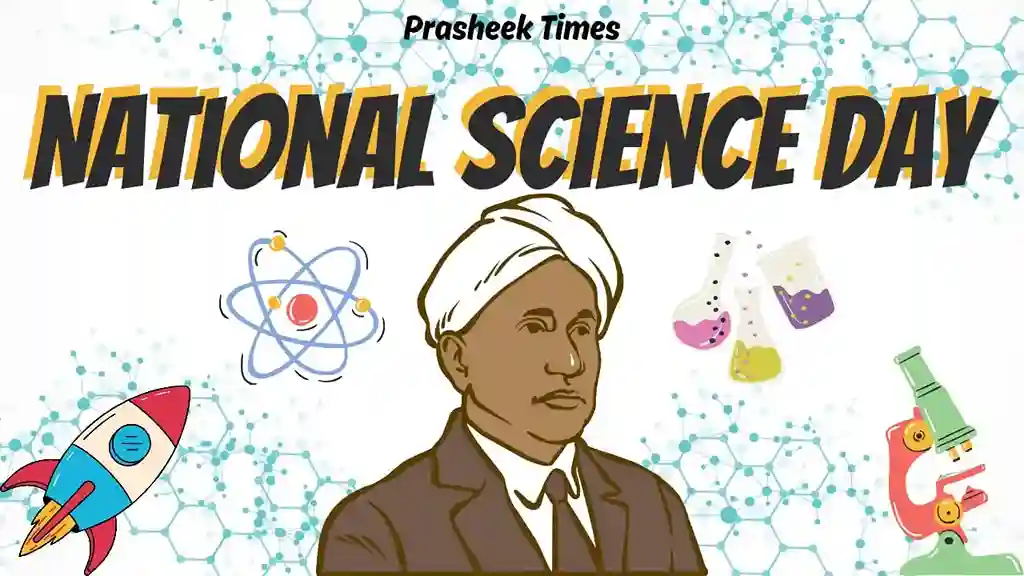From unlocking the mysteries of the universe to the invention of wheel, science empowers humanity to address pressing global challenges such as climate change, disease eradication, and sustainable development.
Science a Latin word “Scientia” means knowledge, expertness, and experience. Where in human history knowing of very first discovery that’s in our human mankind that’s first scientific innovation our ancestor Homo erectus did around approx. 400,000 years ago which was of fire till the date innovation of Artificial Intelligence (AI).
Science spans it’s widest panorama of Insights, from the Marine Trench to the Multi Universe. Humans are always in a Search of new things as Nature in-built set a by default function of curiosity and where science perfectly helps to enhance and boost it.
Science is a rigorous and systematic endeavour that builds and organizes knowledge in the form of testables/Statistical explanations and predictions about the globe.
It enriches individual lives and holds the key to the prosperity and well-being of the entire globe.
Then Science gets classified into 3 Major types that is
• Natural Science
• Social Science
• Formal Science

After an overall watch of science now let’s try to know that why do we celebrate National Science Day on 28th of February every year.
Every year on the Birth Anniversary of C. V. Raman which is 28th of February we celebrate National Science Day.
Who was C. V. Raman?
Sir Chandrasekhara Venkata Raman (7 November 1888 to 21 November 1970) He was an Indian physicist who made groundbreaking contributions to the field of light scattering, leading to the discovery of the Raman Effect.
C. V. Raman was born on November 7,1888, in Tiruchirapalli that is in Tamil Nadu. Raman’s early education was done in Vishakapatnam and Madras (now Chennai). He later persued his higher studies at Chennai’s Presidency College where he also achieved his bachelor’s degree in Physics in 1904 then headed to masters and completed the degree in 1907.
Raman was very interested in Science specifically in optics and acoustics and that led him to conduct very extensive researches throughout his whole career.
After completing his education, he began his professional journey as a lecturer/professor at Presidency College, where he continued his research in various scientific disciplines. His curiosity and dedication to scientific inquiry soon earned him recognition and respect in the academic community.
Raman joined the Indian Association for the Cultivation of Science (IACS) in Kolkata as its Palit Professor of Physics in 1917. During his tenure at IACS Raman discovered his most significant theory “The Raman Effect” – Theory. Throughout his life, C. V. Raman received numerous prizes and honors for his contributions and groundbreaking discoveries to science and education.
In addition to the Nobel Prize, he was awarded the Bharat Ratna which is India’s highest civilian honor, in 1954. Raman’s legacy continues to inspire generations of scientists and researchers around the world, and his contributions to the field of physics remain invaluable to this day, It still inspires everyone.
Sir C. V. Raman passed away on November 21, 1970, leaving behind a rich legacy of scientific discovery, innovation, and excellence.

What is Raman’s Effect:
The Raman Effect, discovered by the eminent Indian physicist Sir C.V. Raman in 1928, elucidates a fascinating phenomenon in the interaction between light and matter. When a beam of light, typically from a laser, is directed onto a sample, a portion of the scattered light experiences a shift in frequency. This phenomenon arises from the interaction between the photons of the incident light and the molecules of the sample.
Fundamentally, the Raman Effect occurs due to the scattering of photons by the sample’s molecules. As the incident photons interact with the molecular bonds, they induce changes in the vibrational and rotational energy levels of the molecules. Consequently, some of the scattered photons emerge with frequencies different from that of the incident light. These frequency shifts provide valuable information about the vibrational and rotational modes within the molecules, reflecting their chemical composition and molecular structure.
The Raman Effect has proven to be an indispensable tool in various scientific disciplines, particularly in spectroscopy and analytical chemistry. By analyzing the Raman spectrum generated from the interaction between light and matter, researchers can gain insights into the molecular composition, structure, and conformation of substances. This information is invaluable for identifying unknown compounds, studying chemical reactions, characterizing materials, and investigating biological systems.
Moreover, the Raman Effect has applications across a wide range of fields, including pharmaceuticals, materials science, environmental monitoring, forensics, and biochemistry. Its non-destructive nature, high sensitivity, and ability to probe a diverse range of samples make it a versatile and powerful analytical technique.
In summary, the Raman Effect represents a fundamental aspect of the interaction between light and matter, offering a wealth of information about the molecular properties of substances. Its significance in spectroscopy and analytical chemistry underscores its profound impact on scientific research and technological advancements across various disciplines.
History of National Science Day:
National Science Day was proposed by the National Council for Science and Technology Communication (NCSTC) to the Indian government in 1986, suggesting February 28 as the date for its observance. Today, this day is celebrated nationwide in India, with participation from schools, colleges, universities, and various academic, scientific, technological, medical, and research institutions.
The occasion commemorates the discovery of the Raman Effect by physicist Sir C.V. Raman in 1928. Activities such as science exhibitions, seminars, workshops, lectures, quizzes, and demonstrations are organized to promote scientific awareness, innovation, and exploration among students, educators, scientists, and the public. The celebrations also include recognizing achievements in science and encouraging scientific literacy and curiosity. Overall, National Science Day serves as a platform to foster a culture of scientific inquiry, discovery, and progress throughout India.
Why we celebrate National Science Day
National Science Day is celebrated to spread/circulate the seriousness and importance of science that is used in our daily life of the normal people to showcase all the findings/innovations, efforts, achievements our scientist & scholars did in the field of science for the human welfare. It is also celebrated to talk on all the problems as well as on implementations of new technologies for more development. Providing opportunity to the scientific minded citizens in India. To encourage the people as well as to popularise Science and technology.
Celebrations of National Science Day in India
The celebration of National Science Day in India is marked by a range of official and public events across the country. Government bodies, educational institutions, scientific institutions, etc organize various programs across the country to celebrate the National Day of Science.
Here is an overview of some common types of events that take place as part of National Science Day celebrations in India:
- Conferment of National Awards for Science & Technology Communication to recognize outstanding efforts in popularizing science among the masses and motivating young minds towards scientific pursuits.
- Radio and television programs, aimed at promoting scientific ideas and thinking.
- Organization of science exhibitions, interactive workshops, lectures, etc by educational institutions.
- Research institutions organize exhibitions of their works, showcasing the latest advancements and achievements in various scientific fields.
- Non-Governmental Organisations and Community Groups also host events, making science accessible to a broader audience.

Themes of National Science Day:
The theme of the year 2018 was “Science and Technology for a sustainable future.”
The theme of the year 2019 was “Science for the People, and the People for Science”
The theme of the year 2020 was “Women in Science.”
The theme of the year 2021 was ‘Future of STI: Impact on Education Skills and Work’.
The theme for NSD of the year 2022 is ‘Integrated Approach in S&T for Sustainable Future’
The theme of the year 2023 was ”Global Science for Global Wellbeing”.
Theme for National Science Day 2024
Each year, the Department of Science and Technology declares a theme for National Science Day Celebrations that highlights a crucial aspect of India’s scientific endeavor and its social implications. These themes reflect the versatile role that science plays in addressing contemporary challenges.
The theme for National Science Day 2024 celebrations has been decided as “Indigenous Technologies for Viksit Bharat”. The multifarious significance of this theme can be seen as follows:
- Reflects a strategic focus on promoting public awareness and appreciation for the indigenization of Science, Technology, and Innovation
- Applauds and promotes the accomplishments of the Indian scientific fraternity to address challenges in the nation’s progress through home-grown technologies.
- Marks a new era of opportunity for the public and scientific fraternity, both domestically and internationally, to collaborate and work together toward contributing to the well-being of India and humanity as a whole.
- Emphasizes the importance of science in making India Atmanirbhar.
- Reaffirms the vision of Amrit Kaal – “Viksit Bharat – 2047”.
On this day let’s remember some great scientist who dedicated their whole life, who were the innovators of our today’s convenience/luxury.
| Scientists | Innovations |
| Sir Isaac Newton (1642–1727) | Laws of motion and universal gravitation. |
| Albert Einstein (1879–1955) | Theory of relativity (both special and general), which revolutionized our understanding of space, time, and gravity. |
| Marie Curie (1867–1934) | Pioneering research on radioactivity, leading to the discovery of the elements polonium and radium. |
| Charles Darwin (1809–1882) | Theory of evolution by natural selection, providing a framework for understanding the diversity of life on Earth. |
| Galileo Galilei (1564–1642) | Improvements to the telescope and observations supporting the heliocentric model of the solar system. |
| Louis Pasteur (1822–1895) | Development of germ theory, pasteurization, and vaccines, laying the foundation for modern microbiology and immunology. |
| Nikola Tesla (1856–1943) | Pioneering work in alternating current (AC) electricity, wireless communication, and numerous electrical inventions. |
| Alexander Fleming (1881–1955) | Discovery of penicillin, the first antibiotic drug, revolutionizing medicine and saving countless lives. |
| Johannes Gutenberg (c. 1400–1468) | Invention of the movable-type printing press, which greatly facilitated the spread of knowledge and the Renaissance. |
| Gregor Mendel (1822–1884) | Discovery of the principles of heredity through his experiments with pea plants, laying the groundwork for modern genetics. |
Author’s Perspective in conclusion:
It is a initiative it is a try to aware citizens to educate to understand science in our day to day life full stop in our super modern era where we are heading and leaping with technology like AI, Quantum computing comma AR etc. Many people are still following old customs keeping believes in superstition and backward orthodox thinkings. B and many active citizens like us trying to spread our awareness about science, and about scientific things. On this day let’s promise to be upgraded in our life by science and which science.
Your Queries:
National science Day, national science day 2024, science day poster, national science day theme, science day, what is science day, celebration of science day.
Happy Reading!
(ADMIN – PRASHEEK TIMES)
Frequently Asked Questions (FAQ):
What is National Science Day?
National Science Day is an annual celebration in India, observed on February 28th, to commemorate the discovery of the Raman Effect by Indian physicist Sir Chandrasekhara Venkata Raman on this day in 1928.
When is National Science Day Celebrated in India?
National Science Day is celebrated in India on February 28th each year.
When was the First National Science Day Celebrated?
The first National Science Day was celebrated in India on February 28, 1987. The Government of India designated this day as National Science Day in 1986, upon the recommendation of the National Council for Science and Technology Communication (NCSTC), to commemorate the anniversary of the Raman Effect’s discovery by Sir C.V. Raman in 1928.
Why do we Celebrate National Science Day?
National Science Day in India is celebrated to commemorate the discovery of the Raman Effect by Sir C.V. Raman on February 28, 1928. Along with this, the celebration also aims to foster a scientific temper among the populace.
What is the theme of National Science Day 2024?
The theme of National Science Day 2024 celebrations is “Indigenous Technologies for Viksit Bharat”. The theme reflects the increased focus of the government on the indigenization of technologies.
What is Raman Effect?
The Raman Effect refers to the phenomenon where light undergoes a change in wavelength when it interacts with matter. When a beam of light, typically from a laser, is directed at a sample, some of the scattered light experiences a shift in frequency. This shift is caused by the interaction between the photons of the incident light and the molecules of the sample, leading to changes in their vibrational and rotational energy levels. The Raman Effect provides valuable information about the chemical composition and molecular structure of substances, making it a powerful tool in spectroscopy and analytical chemistry.





I like it when folks come together and share thoughts.
Great website, stick with it!
Really Appreciated your response, Warm Thanks!
I am sure this article has touched all the internet viewers, its really
really fastidious post on building up new webpage.
Thankyou, Happy readings!